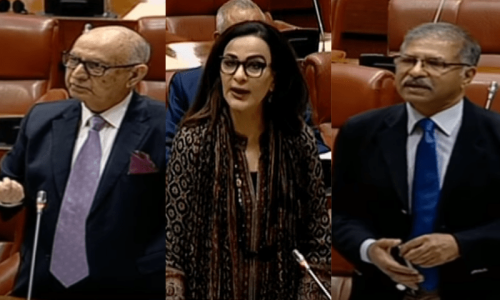AN announcement by the commerce secretary says that his Chinese counterparts have “agreed to accommodate” the demands of Pakistan’s exporter community in the amended free trade agreement between the two countries. Details of specifically which demands have been accommodated have not been provided, except to say that the new FTA is scheduled to be signed in March. This could be the government’s last hurrah before handing over power to an interim government. How much success has actually been scored in those negotiations will only be known once the amended FTA is signed, but if the announcement is to live up to expectations, then Pakistan’s largest export items to China should see considerable tariff concessions extended to them.
Pakistan’s trade deficit with China has tripled in five years, touching $12bn in the last fiscal year. Chinese imports stand at 29pc of Pakistan’s total imports, while exports to China are 8.8pc of the total exports. This is a very large gap for an economy like Pakistan whose total exports are just about double the trade deficit with China. The argument that much of this is accounted for by machinery imports as the country’s economy grows and imports of capital goods rise to service an expanding market cuts little ice with the business community. Such a rapid expansion in the trade deficit is cause for concern, regardless of the composition of the imports, because the country’s capacity to finance a trade deficit of such size is not growing in tandem. We are told to wait till the capital goods being imported are installed for a boost in exports, but the same argument was made by the Musharraf regime when the current account deficit began to swell from 2004 onwards, to little avail. It is understandable that people remain unconvinced by this argument and prefer to see more forceful action to first articulate Pakistan’s commercial interests in its growing China relationship, followed by an equally strong representation of these interests at the negotiating table.
The business community argues that some of the leading Pakistani exports — cotton, textiles and rice — to China enjoy no tariff concessions under the old FTA. If Pakistan’s exports to China registered an increase of $1.4bn between 2006, when the FTA was signed, and 2015, then textiles accounted for $729m of this amount, which is more than half the absolute increase. Rice is the second-largest export item, accounting for almost $194m of the total increase in exports, yet it sees the highest applicable tariff. These high-potential categories should be on the list of items that either have concessional access, or, better still, are zero rated. Getting our interest clear in advancing the relationship with China is becoming an increasingly urgent priority for Pakistan, and the government’s departing hurrah will testify to the quality of their curation of this vital effort.
Published in Dawn, February 10th, 2018











































